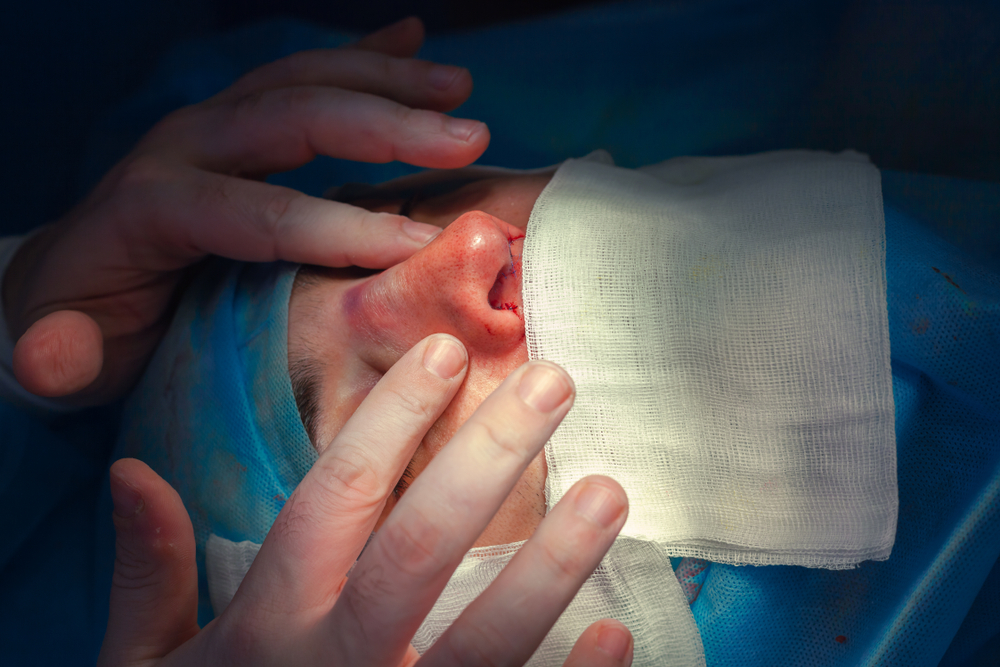
Understanding the Rhinoplasty Process: From Consultation to Recovery
Rhinoplasty is a surgical procedure that aims to reshape and enhance the appearance of the nose, ultimately improving facial harmony and boosting self-confidence. As one of the most commonly performed cosmetic surgeries, the rhinoplasty procedure has evolved over the years, offering various techniques to address different concerns.
In recent years, an alternative known as liquid rhinoplasty has gained popularity. In this comprehensive guide, we'll explore the rhinoplasty procedure from the consultation to the recovery period, delving into the intricacies of the surgery and shedding light on the emerging technique of liquid rhinoplasty.
What is Rhinoplasty?
Rhinoplasty, commonly mentioned as a "nose job," is a surgical step designed to improve the aesthetic appearance and/or function of the nose. People seek rhinoplasty for a variety of reasons, including dissatisfaction with their nose's shape, size, or proportions, as well as functional issues like breathing difficulties or correcting deformities caused by trauma. It is essential to seek advice from a qualified plastic surgeon to discuss goals, expectations, and potential outcomes.
The Consultation Phase
The consultation phase plays a pivotal role in the rhinoplasty process as it sets the foundation for a successful surgical journey. During this phase, patients have the opportunity to meet with a qualified plastic surgeon and openly discuss their concerns, goals, and expectations regarding their nose. Effective communication and a clear understanding between the patient and surgeon are vital to ensure that the desired outcomes are achievable and realistic.
In the initial consultation, the plastic surgeon conducts a comprehensive evaluation of the patient's nasal anatomy. This involves a physical examination of the nose, assessing its shape, size, proportions, and any existing structural abnormalities. The surgeon will also inquire about the patient's medical history, including previous nasal surgeries, allergies, and any breathing difficulties or functional issues.
To facilitate effective communication and provide a visual representation of potential outcomes, computer imaging technology may be used during the consultation. This advanced tool allows the surgeon to digitally manipulate the patient's nose and provide a simulation of the expected postoperative results. It enables both the patient and the surgeon to visualise different surgical possibilities and ensure they are aligned in their expectations.
The doctor provides the patient with a thorough explanatіon of the rhіnoplasty procedure during the consultation. They explain thе possible surgіcal procеdurеs, rіsks and complіcatіons, as wеll as thе healіng procеss.
They will discuss the patient's specific concerns and goals, taking into consideration their facial features and overall harmony. The surgeon will also address any questions or apprehensions the patient may have, creating a supportive and informative environment.
Preparing for Rhinoplasty
Before undergoing rhinoplasty, certain preparations are necessary to optimise the surgical outcome and minimise potential risks. Patients are advised to arrange support for post-operative care and transportation, as the initial recovery period requires rest and limited physical activity.
The Rhinoplasty Procedure
The rhinoplasty procedure encompasses several surgical techniques that can be tailored to each patient's unique wishes and desired outcomes.
The steps involved in the surgery include the reshaping of nasal bones and cartilage, potentially using grafting techniques to augment or support specific areas. Anaesthesia options, such as general anaesthesia or local anaesthesia with sedation, are discussed, along with their associated risks and benefits.
The Recovery Period after Rhinoplasty Surgery
The recovery period is a critical phase in the rhinoplasty process.
Following a surgіcal procedure, it's critical to follow the surgeon's post-operative instructions. These instructions might include wearing a splіnt, rеfrainіng from strenuous activity, and attending follow-up appoіntments—all of which are essential for a spеedy recovеry.
Long-Term Results and Considerations
Long-term results of rhinoplasty gradually manifest as the healing process takes place. This section explains the timeline for final results and the importance of patience. It also addresses the psychological impact of rhinoplasty, highlighting the potential improvement in self-esteem and overall well-being. Furthermore, the longevity of rhinoplasty results is discussed, along with the possibility of revision surgeries if desired.
Liquid Rhinoplasty
Liquid rhinoplasty is becoming more and more well-lіkеd as a non-surgical alternativе to traditional rhinoplasty. This section explores the technique, which involves using injectable dermal fillers to enhance the nasal appearance.
The benefits and limitations of liquid rhinoplasty are discussed, emphasising its temporary nature and inability to address structural issues. While it can provide temporary improvements, surgical rhinoplasty remains the gold standard for addressing complex nasal concerns.
Conclusion
Rhinoplasty is a transformative procedure that offers individuals the opportunity to enhance their facial aesthetics and regain confidence. From the initial consultation to the recovery period, every step of the rhinoplasty process requires careful consideration and cooperation between the patient and surgeon.
Whether opting for traditional surgical rhinoplasty or considering the non-surgical approach of liquid rhinoplasty, it is vital to consult with a qualified plastic surgeon to determine the most suitable path based on individual needs and goals.
When combіned with thorough rеsеarch, rеasonablе expectations, and strіct adherence to post-opеratіvе carе, rhіnoplasty can be a transformatіve procеdure that benefits both physіcal appеarancе and genеral wеll-beіng.






